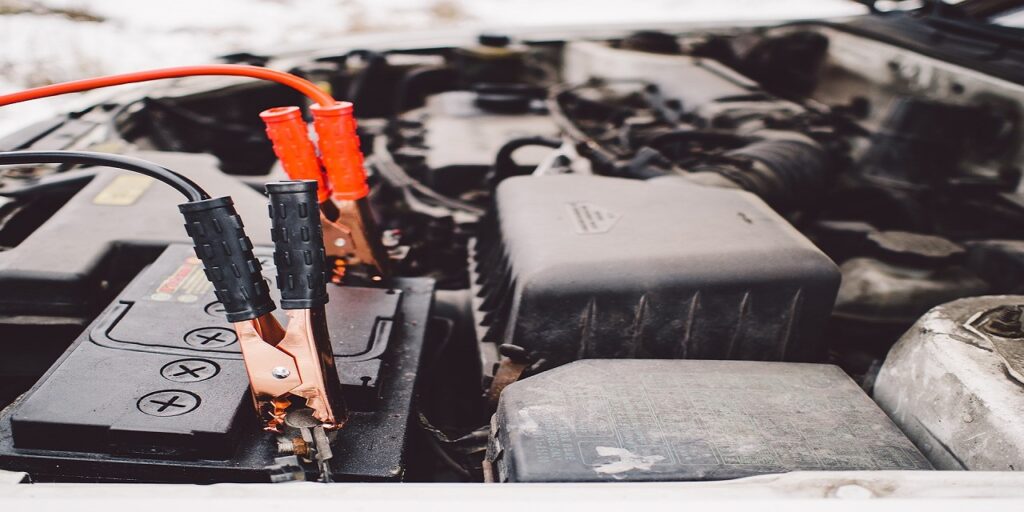A fuel cell is a battery-like device that produces electricity from the electrochemical reaction of hydrogen and the oxygen atom. It can produce electric power ranging from a few Watts to MegaWatts and has an efficiency ranging from 40 to 60% depending on the type of fuel cell technology used. Fuel cells are one of the most energy-efficient conversion devices that exist today. Their operation is quiet and does not release any harmful gases as a byproduct, apart from heat and electricity the only byproduct is water. There is no combustion involved, the electric charges are generated from the oxidation of hydrogen atoms which reacts with oxygen atoms to form water molecules. Unlike batteries fuel cells need not be recharged periodically but instead will continue to produce electricity as long as hydrogen and oxygen are supplied. As there are no moving parts, there is no energy loss, silent operation making the device highly reliable.
The first fuel cells were invented by Welsh Physics Scientist Sir William Robert Grove in 1838 but the commercial use of fuel cells was seen in the 20th century with the invention of highly energy-efficient hydrogen-oxygen fuel cells. Due to its high efficiency and reliability the alkaline fuel cell(uses hydrogen and oxygen as fuel) was used by NASA for their space program as an electric power source for satellites and space vehicles. Now fuel cells are used in many applications from laboratories, buildings to industries. Some highly efficient fuel cells release water as a byproduct that is pure and even fit for drinking.

How do hydrogen fuel cells work?
Modern fuel cells are capable of generating electricity from a variety of fuels like hydrogen, natural gas, and biogas but only the hydrogen-oxygen powered fuel cell is completely pollution-free.
A fuel cell consists of two electrodes, anode, and cathode, and an electrolyte is sandwiched between them. It also has a catalyst that helps in carrying out the electrochemical reaction in an efficient manner. Platinum or palladium are the elements that are used as a catalyst. There are bipolar plates on either side of the unit cell that acts as collectors and help distribute the gases.
The chemical reaction that occurs inside the cell is
Reaction at the cathode: O2 + 2H2O + 4e– → 4OH–
Reaction at the anode: 2H2 + 4OH– → 4H2O + 4e–
Net Cell Reaction: 2H2 + O2 → 2H2O
We can see that in the net cell reaction the byproduct is 2H2O which is a chemical representation of water. This water is usually released in the form of vapour, when condensed water droplets are formed and then into liquid water.
Fuel cell types –
Fuel cells are classified depending on the type of electrochemical reaction, electrolyte, operating temperature, and capacity to generate power.
1. Polymer Electrolyte Membrane(PEM) –
Electrolyte – Perfluoro sulfonic acid
Operating temperature – less than 120.C
Typical stack size – 1kW to 100 kW
Electrical efficiency – up to 60%
Applications – backup power, portable power, distributed generation, transportation, specialty vehicles
2. Alkaline(AFC) –
Electrolyte – Aqueous potassium hydroxide soaked in an alkaline polymer membrane
Operating temperature – less than 100.C
Typical stack size – 1 to 100 kW
Electrical efficiency – up to 60%
Applications – Military, space, backup power, transportation
3. Phosphoric Acid(PAFC) –
Electrolyte – Phosphoric acid-soaked in a polymer membrane
Operating temperature – 150 – 200.C
Typical stack size – 5 to 400 kW
Electrical efficiency – up to 40%
Applications – Distributed generation
4. Molten Carbonate(MCFC) –
Electrolyte – Molten lithium, sodium/potassium carbonate soaked in a porous matrix
Operating temperature – 600 – 700.C
Typical stack size – 300 kW to 3 MW
Electrical efficiency – up to 50%
Applications – Electric utility, distributed generation
5. Solid Oxide(SOFC) –
Electrolyte – Yttria stabilized zirconia
Operating temperature – 500 – 1000.C
Typical stack size – 1 kW to 2 MW
Electrical efficiency – up to 60%
Applications – Auxiliary power, electric utility, distributed generation.
Do you know?
All our transporting and heavy-lift vehicles can be powered by fuel cells.
Factors affecting the performance of fuel cells –
The output electric power produced by the fuel cell depends on several factors that include the type of fuel cell, size of the fuel cell, operating temperature, and pressure at which gases are supplied.
Fuel cells for higher power applications –
To increase the overall voltage, unit fuel cells are connected in series to form a stack. Depending upon the requirement, the fuel cell stack size may contain only a few or as many as hundreds to thousands of unit cells connected together. This scalability property of fuel cells makes it ideal for a variety of commercial applications from electronic devices(20-50 Watts) to electric vehicles(50-120 Watts), to homes(1-5 KW) and central power generation(200 MW and more). Stationary fuel cells can also be used with cogeneration to boost their performance in which the excess heat released during generation can be used for other applications.
Current challenges –
Although the fuel cells have impressive efficiency and scalability they are not commonly available due to their high cost for catalysts like platinum. Reducing its overall cost and improving its durability are the two topmost significant challenges to commercialize fuel cells.
Various companies should be encouraged to manufacture the best fuel cells to create competitive market prices. Research on fuel cells is mainly focused on developing new materials that will reduce the overall cost and extend the life of the fuel cell stack and its components.
Useful Glossary –
- Electrochemical reaction – A process in which electrons flow between a solid electrode and a substance like an electrolyte
- Watt – The SI(International System of Units) unit of power
- Catalyst – A substance that enhances the rate of chemical reaction
- Electrolyte – A solution that allows the flow of electrons (electricity) from cathode to anode
- Stack – Objects arranged and connected in a specific manner

